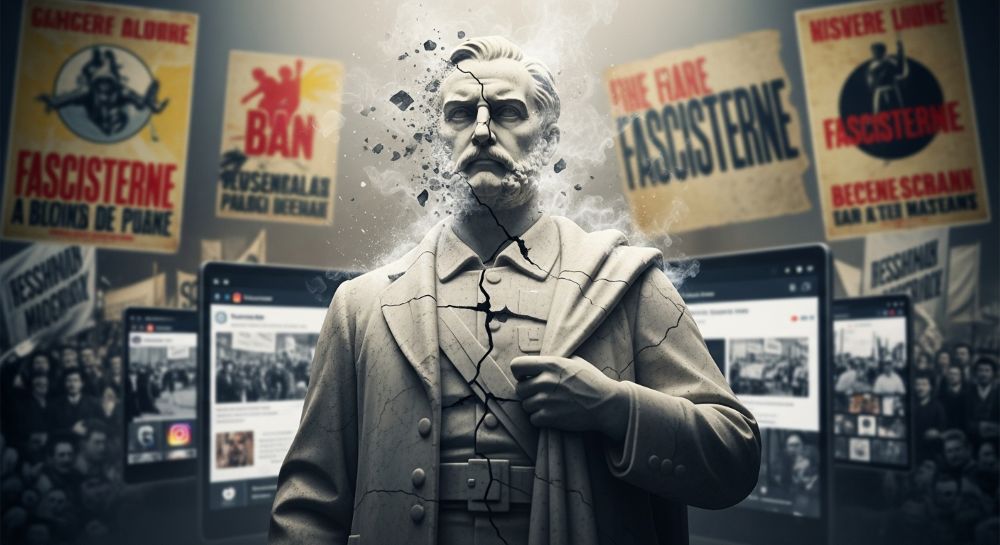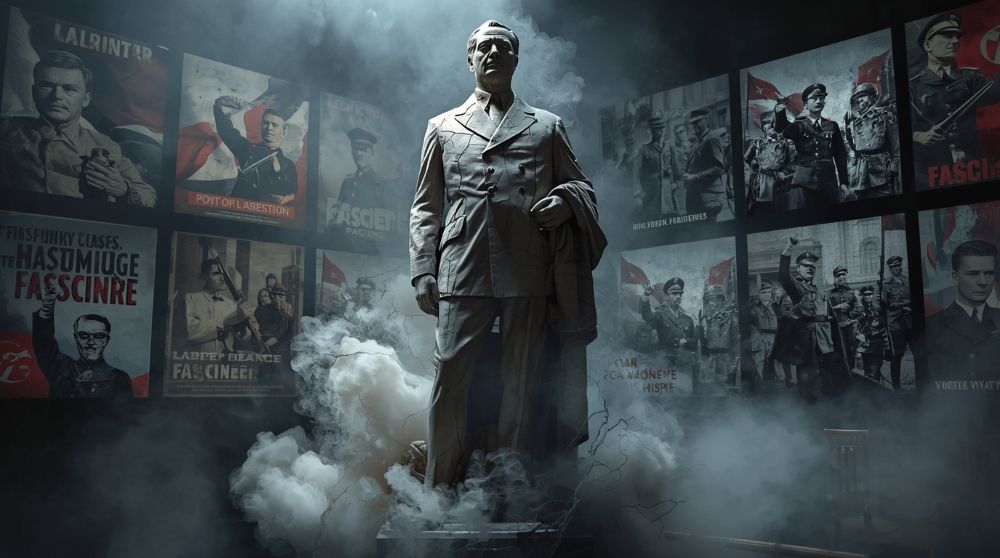The term Fascisterne originates from the Danish and Scandinavian languages, meaning “the fascists.” It broadly refers to individuals and movements adhering to fascist ideologies that dominated several European nations during the early 20th century. Understanding Fascisterne allows us to explore how authoritarian nationalism, militarism, and totalitarian control shaped modern history.
Why Fascisterne Still Matters Today
Even decades after the fall of historical fascist regimes, It remains a symbol of unchecked power and manipulation. The study of this term reminds us that authoritarian tendencies can reappear in modern politics through propaganda, fear, and populist rhetoric. Examining its equips societies to recognize and resist these patterns.
The Historical Backdrop: Europe After World War I

A Continent in Ruins and Despair
After World War I, Europe was left devastated — millions were dead, economies were broken, and governments collapsed. This social and economic instability created a vacuum filled with anger, nationalism, and calls for strong leadership, providing the perfect breeding ground for the rise of Fascisterne.
The Psychological Need for Order
Citizens disillusioned by democracy’s inefficiency turned to leaders promising strength and unity. This craving for control and discipline gave fascist movements legitimacy, allowing them to thrive under the pretense of countrywide revival and social stability.
The Birth of Fascisterne: From Mussolini to Hitler
Mussolini and the Rise of Italian Fascism
In 1919, Benito Mussolini founded the Fasci di Combattimento, the world’s first fascist organization. By manipulating Italy’s national pride and economic frustration, Mussolini’s followers — Fascisterne — seized power in 1922 during the March on Rome, establishing a totalitarian regime that glorified violence, discipline, and nationalism.
Hitler’s Adaptation in Germany
Inspired by Mussolini, Adolf Hitler adapted fascism to Germany’s unique context, merging it with racial ideology. By 1933, the Nazi Party controlled the state, using fear, propaganda, and militarism. German Fascisterne replaced democracy with dictatorship, leading the world toward World War II and genocide.
Core Ideological Pillars of Fascisterne

Ultranationalism and Authoritarianism
At the center of Fascisterne ideology lies absolute loyalty to the nation and its leader. The belief that the leader embodies the people’s will justified extreme nationalism and total control. Individual freedom was sacrificed for what was seen as the collective good of the nation.
Militarism, Purity, and Anti-Liberalism
Fascisterne glorified war, discipline, and hierarchy. Liberal democracy was labeled weak, and communism was portrayed as a threat. The obsession with racial purity and national superiority led to discrimination, persecution, and ultimately, genocide.
Propaganda and Power: Tools of Manipulation
The Role of Media in Shaping Thought
Fascisterne mastered propaganda through newspapers, films, and radio. Leaders like Joseph Goebbels engineered mass media to glorify the regime and suppress dissent. Through repetition and symbolism, propaganda turned lies into accepted truths.
Symbols, Rituals, and Emotional Control
From salutes to marches and flags, fascist rituals created emotional unity among followers. These spectacles weren’t random—they were psychological tools designed to replace rational thinking with loyalty and emotion.
The Machinery of Control: Violence, Law, and Fear
Paramilitary and Police Suppression
Groups such as Italy’s Blackshirts and Germany’s SS enforced Fascisterne dominance. They used intimidation, beatings, and assassinations to silence opposition, ensuring citizens obeyed through fear rather than faith.
Manipulating the Legal System
Once in power, fascist regimes legalized dictatorship. Hitler’s Enabling Act allowed him to pass laws without parliament, turning democracy’s framework into a tool of tyranny. Fascisterne proved that oppression can grow under the disguise of legality.
The Economic Vision of Fascisterne

Corporatism and Controlled Capitalism
Rather than rejecting capitalism, It reshaped it under state control. Industries, labor unions, and employers operated in harmony — not for freedom but for the interests of the regime. This corporatist model maintained order while enriching the state elite.
Economic Growth Through Propaganda
Projects like Germany’s Autobahn and Italy’s reclamation campaigns symbolized prosperity. However, these “economic miracles” hid growing inequality and militarization. The illusion of progress kept citizens loyal even as freedoms disappeared.
Cultural and Social Engineering Under Fascisterne
Education and Indoctrination
Youth were indoctrinated to worship the leader and despise outsiders. Fascist education glorified nationalism and obedience. The goal was to produce citizens who acted, thought, and even dreamed in service to the regime.
Gender and Family Ideals
Fascist societies promoted rigid gender roles — men as warriors and women as mothers. Fascisterne used family and motherhood as propaganda tools, shaping population policy and national identity around racial purity.
Collapse and Consequence: The Fall of Fascisterne
World War II and the End of Dictatorships
The defeat of Axis powers in 1945 marked the fall of major its regimes. Italy and Germany were left in ruins, their leaders dead or imprisoned. The destruction revealed the devastating consequences of totalitarian ambition.
The Aftermath and Human Cost
The war exposed the brutality of fascist rule — concentration camps, massacres, and mass displacement. Millions perished under Fascisterne ideology, leaving humanity to reckon with its moral collapse.
The Legacy of Fascisterne: Post-War Memory and Justice
Nuremberg Trials and Accountability
The Nuremberg Trials (1945–46) held key Nazi leaders accountable for crimes against humanity. These proceedings set the foundation for international law and the recognition of genocide as a global crime.
Denazification and Reconstruction
Germany and Italy embarked on de-fascistization. Through education and democracy-building, both nations sought to dismantle authoritarian ideologies and rebuild societies grounded in liberty and justice.
Also read: Translate English to Spanish: The Complete Guide for All
Fascisterne in the Modern Era: Echoes of the Past
Rise of Far-Right and Populist Movements
In recent decades, far-right parties have reemerged across Europe and beyond. While not identical to historical Fascisterne, they often use similar rhetoric — nationalism, fear of outsiders, and disdain for democratic checks.
Digital Propaganda and Online Radicalization
Social media has become the new propaganda tool. Algorithms amplify hate speech and conspiracy theories, spreading fascist-inspired ideology globally. The tactics of Fascisterne have adapted to the digital age.
Lessons from Fascisterne: Protecting Democracy Today
The Importance of Historical Awareness
Studying it reminds us how democracies can crumble from within. Understanding their manipulation tactics helps citizens recognize the warning signs of authoritarianism early.
Defending Human Rights and Civic Responsibility
Freedom requires vigilance. Promoting education, critical thinking, and respect for diversity ensures that the tragedies born of its ideology are never repeated.
Conclusion
The story of it is a warning written in history’s darkest ink. From their rise in post-war chaos to their collapse in global conflict, it revealed how fear, propaganda, and blind nationalism can destroy entire civilizations. Today, echoes of this ideology linger, reminding humanity to stay alert, informed, and united in defense of democracy and dignity.
FAQs
1. What does “Fascisterne” mean in history?
“Fascisterne” is the Danish and Scandinavian word for “the fascists.” It refers to individuals and movements that followed fascist ideologies during the 20th century, promoting nationalism, power, and strict authoritarian rule.
2. Who founded the Fascisterne movement?
Its movement traces back to Benito Mussolini, who founded the first fascist regime in Italy. His ideas later inspired Adolf Hitler and other far-right leaders across Europe, shaping much of early 20th-century politics.
3. What were the main beliefs of Fascisterne?
Core beliefs of it included extreme nationalism, military strength, and opposition to democracy and communism. They emphasized obedience to a single leader and believed that the state’s power was above individual rights.
4. How did Fascisterne use propaganda to gain control?
It used mass propaganda, controlled media, and emotional symbols to influence public opinion. Through films, speeches, and rallies, they glorified their leaders and spread fear to maintain power and unity.
5. Why did Fascisterne reject liberal democracy?
FIt believed liberal democracy weakened national unity. They viewed open debate and political diversity as threats to the state, promoting instead a one-party system under a strong, authoritarian leader.
6. How did Fascisterne rise to power in Europe?
It leaders rose by exploiting economic crises, fear of communism, and political instability after World War I. They promised national revival, jobs, and order—appealing to citizens desperate for stability.
7. What caused the downfall of Fascisterne regimes?
The fall of it regimes came with World War II. Their aggressive expansion, human rights abuses, and alliances with Nazi Germany led to defeat and collapse by 1945.
8. What is the legacy of Fascisterne in modern times?
Today, the legacy of it serves as a warning against authoritarianism. Their history reminds nations to protect human rights, democracy, and freedom of expression.
9. Are there modern movements similar to Fascisterne?
Some modern extremist or far-right movements show similar propaganda tactics and nationalist rhetoric as Fascisterne, though often under different political names and ideologies.
10. What lessons can society learn from Fascisterne history?
The greatest lesson from Fascisterne is the importance of educating future generations about tolerance, democracy, and critical thinking to prevent the return of hate-based ideologies.
11. How does Fascisterne connect to global history today?
The influence of it can still be seen in global debates over power, nationalism, and populism. Understanding their history helps people recognize the early signs of political extremism.
12. Why is studying Fascisterne important in modern education?
Studying it builds awareness about the dangers of totalitarian systems. It encourages young people to value diversity, equality, and civic participation in protecting democratic society.









